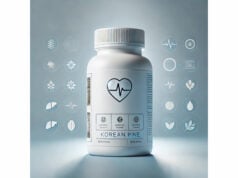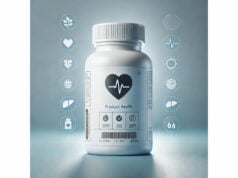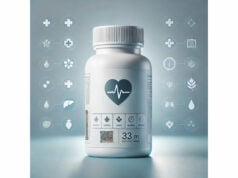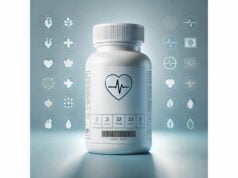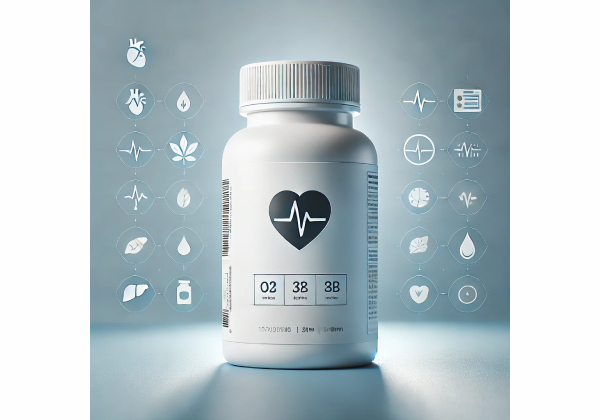
Konnyaku is a traditional Japanese food made from the corm of the konjac plant (Amorphophallus konjac). Its springy, jelly-like texture comes from glucomannan, a unique soluble fiber that absorbs many times its weight in water. In everyday meals, konnyaku appears as blocks, noodles (shirataki), threads (ito-konnyaku), and “rice.” Because it is mostly water and fiber, konnyaku is very low in calories and carbohydrates while providing volume and satiety. Beyond culinary appeal, its viscous fiber can help maintain normal cholesterol, support regularity, and temper post-meal blood sugar rises when used alongside a balanced diet. Yet there are caveats: the same gelling property that makes konnyaku useful can be risky if taken as dry tablets without enough water, and tiny gel cups pose choking hazards. In this guide, you’ll learn how konnyaku works, who benefits most, realistic results to expect, how much to use, and how to avoid the common pitfalls—so you can enjoy its texture and health perks with confidence.
Key Insights
- Helps support satiety, bowel regularity, and maintenance of normal LDL cholesterol when used with meals.
- Weight change tends to be small; use konnyaku to enhance, not replace, a healthy eating pattern.
- Typical supplemental glucomannan range: 2–4 g/day, divided before meals, with 250–350 mL water each dose.
- Avoid if you have swallowing difficulties, esophageal or intestinal narrowing, or a history of obstruction.
Table of Contents
- What is konnyaku and how it works
- Benefits: who it helps most
- How to use konnyaku in meals
- Dosage, serving sizes, and timing
- Side effects, risks, and who should avoid
- Evidence summary: what studies show
What is konnyaku and how it works
Konnyaku is a gel made by mixing purified konjac flour (rich in glucomannan) with water and a mineral coagulant—traditionally calcium hydroxide—then heating until set. The process cross-links the long glucomannan chains, creating a firm, elastic matrix that holds water. The result is a neutral-tasting, slightly bouncy food that takes on sauces and broths beautifully.
Why glucomannan matters. Glucomannan is a highly viscous soluble fiber. In the stomach, it hydrates and forms a gentle gel that increases volume and slows gastric emptying. In the small intestine, that gel modestly slows nutrient transit, which can temper the rate at which carbohydrates are absorbed. In the large intestine, bacteria ferment portions of glucomannan into short-chain fatty acids (SCFAs)—acetate, propionate, and butyrate—that help nourish the gut lining and may influence lipid metabolism.
Food versus supplement. In konnyaku foods, glucomannan is already hydrated and bound with calcium, so it behaves as a low-energy, high-volume ingredient rather than a concentrated fiber supplement. In supplement capsules or powders, glucomannan is dry and must hydrate after ingestion, which is why generous water intake is critical. Both forms can contribute to satiety and bowel regularity; supplements are simply a more standardized way to reach gram-level fiber targets.
Taste and nutrition snapshot. A typical 150–200 g serving of plain konnyaku or shirataki noodles provides very few calories, minimal digestible carbohydrate, and a small amount of viscous fiber (often in the range of ~1.5–3 g per serving, depending on brand and formulation). Sodium is typically low unless flavored; calcium content can be modest due to the setting agent. Because konnyaku is largely water and fiber, it is best seen as a carrier for nutrient-dense sauces, proteins, and vegetables.
How it can help. The same viscosity that gives konnyaku its texture is responsible for practical benefits: increased fullness for some people, easier stool consistency with adequate hydration, and a gentle nudge toward healthier blood lipids when used consistently as part of a balanced eating pattern. Effects are modest and accumulate with routine use.
Benefits: who it helps most
Satiety and portion control
Because konnyaku adds bulk without many calories, it can help some people feel satisfied with smaller portions. The effect is most noticeable when konnyaku replaces high-calorie starches in meals rather than being added on top. Think noodle bowls where half or all of the pasta is swapped for shirataki; stir-fries where konnyaku “rice” stands in for part of the white rice; or hotpots where sliced konnyaku soaks up fragrant broths.
Bowel regularity and stool comfort
As a bulk-forming, water-holding fiber, glucomannan helps soften stool and promote regularity. If you struggle with hard stools or low fiber intake, gradually adding konnyaku foods and, if needed, a small supplemental dose of glucomannan around meals can make a noticeable difference. Hydration is the linchpin; without enough water, any viscous fiber can backfire.
Maintenance of normal LDL cholesterol
Viscous fibers can bind bile acids in the intestine, increasing their excretion. The liver then draws on circulating cholesterol to replace them, which can gently lower LDL. Glucomannan is among the most viscous dietary fibers, and consistent, meal-timed intake is key. Expect incremental changes over several weeks rather than an overnight shift.
Post-meal glucose smoothing
When you take glucomannan with carbohydrate-containing meals, the gel can slow the rate at which glucose enters the bloodstream. In real life, the benefit shows up as steadier energy and fewer spikes after mixed meals. The size of the effect varies: it’s more obvious with rapidly digested carbs and less noticeable with already fiber-rich, slow-digesting meals.
Who benefits most?
- Adults seeking gentle appetite support during calorie-conscious eating.
- People aiming to maintain normal LDL cholesterol as part of a heart-healthy pattern.
- Those needing bulk-forming fiber for stool comfort.
- Individuals looking to smooth post-meal glucose alongside other diet changes.
Who sees limited benefit?
- Anyone expecting significant weight loss from konnyaku alone.
- People who already consume ample soluble fiber from legumes, oats, fruit, and vegetables; marginal returns may be small.
- Those unable to pair intake with adequate water.
Mindset for success. Think of konnyaku as a structural ingredient that shapes meals—adding volume and texture while displacing excess calories—rather than a “fix.” Pair it with lean proteins, vegetables, and healthy fats, and the benefits add up.
How to use konnyaku in meals
Choose your form wisely
- Blocks (slabs): Slice for oden, hotpot, stews, or pan-sear to add chew to stir-fries. Score the surface to help sauces cling.
- Ito-konnyaku (threads): Great in sukiyaki, mapo tofu, or glass-noodle style dishes where texture matters.
- Shirataki noodles: Use in brothy soups, yakisoba-style stir-fries, noodle bowls, or cold salads.
- Konnyaku “rice”: Mix with jasmine or brown rice (start at 50:50) to cut calories and boost volume without losing the rice experience.
Prep for best texture and flavor
- Rinse well. Drain and rinse under cold water to remove the characteristic konnyaku aroma.
- Dry-cook or par-boil. Briefly boil (1–2 minutes) or pan “dry-fry” to drive off moisture and improve sauce adherence.
- Sauce matters. Konnyaku is a flavor sponge—pair it with bold profiles: miso-ginger, chili-garlic, sesame-soy, tomato-basil, coconut-curry.
Meal ideas
- High-volume noodle bowl: Shirataki + sautéed mushrooms + bok choy + soft egg + sesame-chili dressing.
- Konnyaku mapo: Crumbled tofu and konnyaku threads simmered in a spicy bean sauce; serve over steamed greens.
- Half-and-half fried rice: Mix konnyaku “rice” 1:1 with day-old rice, add peas, scallions, and shrimp; season with tamari and sesame oil.
- Taco night swap: Pan-sear diced konnyaku with cumin, smoked paprika, and lime; use as part of a veggie filling.
- Brothy comfort: Clear soup with konnyaku slices, napa cabbage, shiitake, and a miso or chicken stock base.
Grocery and storage tips
- Look for simple labels: Water, konjac flour or konjac yam, and calcium hydroxide (or calcium chloride). Flavored products may add sodium or sugar—check the panel.
- Refrigeration: Shelf-stable packs store at room temperature before opening; refrigerate after opening and use within 2–3 days.
- Batch cooking: Pre-rinse and dry-cook several packs at once; store in airtight containers for quick weeknight meals.
Dining out and travel
- Keep single-serve shirataki pouches on hand for hotel microwaves or office lunches; pair with pre-cut salad kits, rotisserie chicken, or canned beans for a fast, balanced bowl.
Dosage, serving sizes, and timing
Everyday food portions
- Konnyaku blocks or noodles: Typical servings range from 150–250 g (drained weight) per meal. Depending on brand and formulation, expect roughly ~1.5–3 g of fiber per 150–200 g serving. Because labels vary, use the nutrition panel on your product to guide your count.
- Konnyaku “rice”: A 150 g portion mixed 50:50 with cooked rice trims calories while maintaining familiar texture.
Supplemental glucomannan (for targeted effects)
- General support/regularity: 2–3 g/day, divided before 2–3 meals.
- Cholesterol maintenance: 3–4 g/day, divided with meals for 4–8 weeks, alongside a heart-healthy pattern.
- Post-meal glucose smoothing: 1 g just before a carbohydrate-containing meal, up to 2–3 times daily.
Water is essential
- For each 1 g of supplemental glucomannan, drink 250–350 mL of water immediately. With capsules, swallow gradually and finish the full glass. With powder, mix and drink promptly before thickening. Do not take at bedtime.
Start-low, go-slow plan (two weeks)
- Days 1–3: 1 g/day before your largest meal (or one konnyaku meal).
- Days 4–7: 2 g/day split before two meals (or two konnyaku meals).
- Days 8–14: 3 g/day before two to three meals if tolerated, or stabilize at your comfortable level.
Medication spacing
- Separate supplemental glucomannan from oral medications and fat-soluble vitamins by at least 2–3 hours to avoid reduced absorption.
Special notes
- Tablet forms: Hard tablets can swell before reaching the stomach if not taken with enough water; capsules or powder are generally safer choices.
- Children and older adults: Prioritize food-form konnyaku in small, well-chewed bites. Avoid small, firm gel cups altogether.
- Athletic days: Use konnyaku meals after training with protein and colorful vegetables; do not rely on konnyaku alone for recovery nutrition.
Side effects, risks, and who should avoid
Common, usually mild
- Bloating, gas, or cramping during the first week, especially if you increase intake quickly.
- Early fullness that can be helpful for some but problematic if you struggle to maintain weight.
Less common but important
- Esophageal or intestinal obstruction when dry glucomannan is taken with insufficient water or in people with anatomical narrowing. Signs include chest pain after swallowing, persistent vomiting, severe abdominal pain, or inability to pass stool. Seek care immediately if these occur.
- Medication absorption issues if doses are taken too close together. Maintain the 2–3 hour buffer.
Choking risk from mini gel cups
- Small jelly cups made with konjac have been recalled due to choking hazards, especially in children. Their firm gel does not readily dissolve, and the cups can lodge in the airway. Do not offer these products to children or anyone with swallowing difficulties.
Who should avoid or seek medical advice first
- People with dysphagia (trouble swallowing), known esophageal strictures, prior bowel obstruction, or significant GI motility disorders.
- Young children: avoid konjac mini gel cups entirely; use age-appropriate, well-cut food pieces if offering konnyaku at all.
- Pregnancy and breastfeeding: food-form konnyaku in normal portions is generally acceptable, but gram-level supplements lack robust data; discuss with your clinician.
- Diabetes on glucose-lowering medications: monitor closely when starting; glucomannan may modestly reduce post-meal glucose. Adjustments should be guided by your care team.
- Polypharmacy: review timing with a pharmacist to prevent absorption conflicts.
Practical safety checklist
- Always pair supplements with a full glass of water.
- Do not lie down immediately after taking capsules or powder.
- Increase intake gradually to minimize gas and cramping.
- Keep konnyaku foods refrigerated after opening and use within a few days.
Evidence summary: what studies show
Cholesterol and cardiometabolic health
Expert assessments of glucomannan as a food additive and fiber consistently indicate acceptable safety at typical intakes and support its use as a highly viscous fiber. Mechanistically, viscous fibers increase bile acid excretion, prompting the liver to draw on circulating cholesterol, which can contribute to maintenance of normal LDL values when used regularly with meals.
Glycemic outcomes
Controlled clinical trials in adults with type 2 diabetes have shown that adding glucomannan to a conventional diet can improve markers of glycemic control and blood lipids over several weeks. Meta-analytic work continues to explore the magnitude and consistency of these effects, with the overall picture suggesting supportive but modest benefits when intake is meal-timed and consistent.
Weight management
Research on weight change is mixed. Some analyses report little or no additional weight loss versus placebo over the short to medium term, while others note small reductions. Realistically, konnyaku and glucomannan should be positioned as satiety aids within comprehensive plans that prioritize adequate protein, abundant vegetables, fiber-rich carbohydrates, resistance training, and sleep—rather than as primary drivers of fat loss.
Gastrointestinal function
As a bulk-forming fiber, glucomannan improves stool softness and frequency in many individuals, provided hydration is adequate. Tolerance issues (bloating, gas) usually resolve with gradual titration and steady water intake.
Safety surveillance
Food safety authorities have re-evaluated konjac gum and konjac glucomannan with attention to manufacturing purity, heavy metals, and microbiological criteria. Most adverse reports involve improper use (insufficient water with supplements) or product form (choking with mini gel cups), not ordinary meal portions of konnyaku.
Practical takeaway
- Strongest support: bowel regularity and maintenance of normal LDL as part of a heart-healthy diet.
- Conditional support: post-meal glucose smoothing, especially with higher-carbohydrate meals.
- Variable support: weight loss unless integrated into a broader lifestyle change.
- Safety: favorable when used with water, at meal times, and avoiding high-risk product forms for vulnerable groups.
References
- Re-evaluation of konjac gum (E 425 i) and konjac glucomannan (E 425 ii) as food additives 2017 (Guideline)
- Effects of Glucomannan Supplementation on Type II Diabetes: A Meta-Analysis of Randomized Controlled Trials 2023 (Systematic Review)
- The efficacy of glucomannan supplementation in overweight and obesity: a systematic review and meta-analysis of randomized clinical trials 2014 (Systematic Review)
- Konjac-mannan (glucomannan) improves glycemia and other associated risk factors for coronary heart disease in type 2 diabetes. A randomized controlled metabolic trial 1999 (RCT)
- Tiffany Food Corp Recalls Mini Fruit Jelly Cups Because of Possible Choking Hazard 2023 (Safety Notice)
Disclaimer
This guide provides general information only and is not a substitute for personalized medical advice, diagnosis, or treatment. Talk with your licensed healthcare professional before starting or changing any supplement, especially if you take prescription medications, have diabetes or heart, kidney, or gastrointestinal conditions, are pregnant or breastfeeding, or have swallowing difficulties. Seek medical attention urgently for chest pain after swallowing supplements, persistent vomiting, severe abdominal pain, or signs of bowel obstruction.
If this article helped you, please consider sharing it on Facebook, X (formerly Twitter), or your preferred platform, and follow us for future evidence-informed nutrition guides. Your support helps us continue creating high-quality, practical content.


